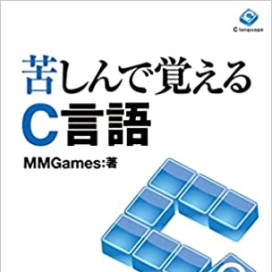
Read it right next to your computer.
Book version bitter C
#include <stdio.h>
int main(void)
{
char C;
for (C = 'A'; C <= 'Z'; C++) {
printf("%C", C);
}
printf("\n");
return 0;
}#include <stdio.h>
#include <string.h>
int main(void)
{
char fname[256], name[256];
printf("名字を入力して下さい:");
scanf("%s", fname);
printf("名前を入力して下さい:");
scanf("%s", name);
strcat(fname, name);
printf("フルネームは %s\n", fname);
return 0;
}for (i = 0; i < 10; i++) {
printf("%d ", data[9 - i]);
}
Learning C language through suffering (Kushi C) is
This is the definitive introduction to the C language.
It systematically explains the basic functions of the C language.
The quality is equal to or higher than commercially available books.